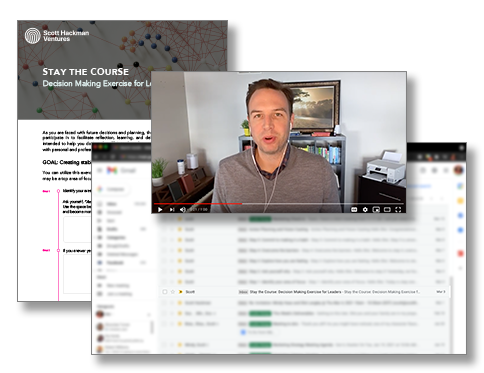When our team of coaches sets out on a new venture with a business leader who has a keen interest in prioritizing the growth and development of their team members, we challenge them to consider the effectiveness of their 1:1 meetings.
This challenge is based on one of our main tenets at Scott Hackman Ventures — “We can minimize suffering by maximizing learning at work”. An enjoyable work culture grows out of personal and devoted relationships, and one way to ensure better relationships amongst team members is purposeful 1:1 meetings.
What is a Purposeful 1:1 Meeting?
You have probably had a 1:1 meeting during your tenure at a job where a bucket of time was set aside on a specific date for you to speak directly to the person you report to at work. Did you have opportunities to speak to this person outside of this meeting? Did you lead the meeting? Did you feel safe speaking up about any concerns? Did you leave the meeting feeling like you were heard? If you answered no to any of these questions, you likely did not have a purposeful one-on-one meeting.
We define a purposeful 1:1 meeting as a meeting where both people know why they’re meeting and what they want out of the meeting. It’s about getting to know each other in a way that produces a productive, healthy working relationship where organizational and intrapersonal issues that arise can be resolved quickly and wisely. In a purposeful 1:1, psychological safety is cultivated, an environment of trust is birthed and each team member’s development is prioritized.
The Benefits of a Purposeful Meeting
The value of a purposeful 1:1 meeting is immeasurable. It extends from the two parties involved into the overall success of the business. The leader invests in their direct report by helping them develop their knowledge and skills. The team member positively responds to the leader’s support and increases their engagement in company culture. As a result of these vested employees, the company experiences growth.
Should a Purposeful 1:1 Meeting Have a Purpose?
The usefulness of a 1:1 meeting can increase exponentially when there is a specific purpose. There are three common purposes for a 1:1 meetings that we’ve observed in our ventures with clients:
- New Team Members
- Regular Touchpoints
- During Transitions
Your list may differ a bit. What’s important is to know the purpose of your meeting up front. This will help you set clear objectives and create a concise agenda with questions for the meeting.
Next Steps
Whether this is your first time conducting a 1:1 meeting or you’re looking to improve your next 1:1 meeting, set your intentions to make it a purposeful one. Capitalize on the opportunity to influence and educate your team members. Build vulnerability-based trusted relationships and advance your business to higher levels of innovation, thinking and growth.
Our Leadership Development Program equips current leaders with the tools they need to build future leaders within their organizations. Some of those tools include a more in-depth look at activities like those mentioned above.
Book a complimentary consultation to learn more about how we can help.
Check out other posts in this series:


Scott Hackman is the Founder and CVO of Scott Hackman Ventures. He has over 15 years of experience in business advising, coaching, and leading growth through transitions.
Meet Scott.




